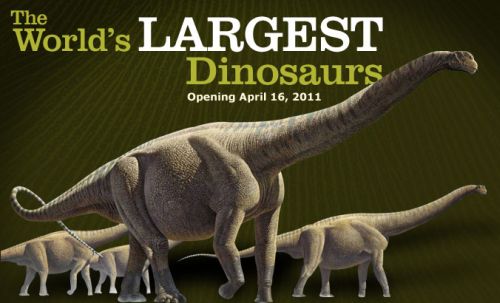October 11, 2014–April 12, 2015
The World’s Largest Dinosaurs, a major new exhibition coming in October to the North Carolina Museum of Natural Sciences, explores the amazing biology of a group of uniquely super-sized dinosaurs: the long-necked and long-tailed sauropods, some of which may have reached lengths of 130 feet. The exhibition draws on cutting-edge paleo-biological research that looks in part to living organisms to make inferences about how these giants were able to thrive, as a group, for approximately 140 million years. Through innovative exhibits — including the exhibition centerpiece, a life- sized, detailed model of a 60-foot-long Mamenchisaurus —The World’s Largest Dinosaurs takes visitors beyond the bones and into the bodies of these titans, shedding light on how heart rate, respiration, metabolism, and reproduction are linked to size.
Distinguished by their colossal size, sauropods included animals of diverse shape, and ornamentation, such as the gigantic Apatosaurus, formerly known as Brontosaurus. Focusing on the biology and behavior of these diverse creatures, The World’s Largest Dinosaurs builds on a growing body of research that examines dinosaurs as living animals, primarily through comparisons with modern dinosaur relatives.
The exhibition is curated by Mark Norell, chair of the American Museum of Natural History’s Division of Paleontology, who has done groundbreaking work in the field of dinosaur biology, and features the work of exhibition guest co-curator Martin Sander from the University of Bonn in Germany. Sander has assembled a multi-disciplinary research team of experts in materials science, animal nutrition, sports medicine, biomechanics, and paleontology to address the intriguing question of what sauropods in particular were like as living animals and how they became so large.


